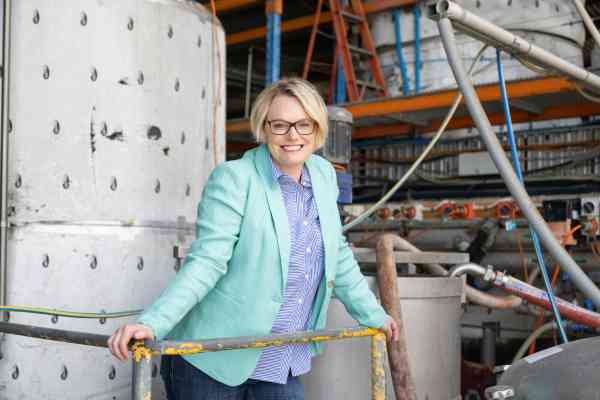Safer battery storage in sight
Will this new gel-based battery tech transform energy storage in our homes, offices and utilities?

A new gel-based battery made from readily available components offers a promising alternative in the renewable energy storage arena.
Transitioning to a carbon-neutral economy by 2050 will require vast amounts of energy storage capacity.
At present, most renewable storage batteries are based on lithium – a mineral found in only a handful of locations, inhibiting supply and impacting on cost.
Now a new type of battery promises to offer a more scalable solution for renewable energy storage in our homes, offices, factories and utilities.
Its developer, Gelion Technologies, was spun out of the University of Sydney in 2015 to commercialise inventions in non-flow zinc-bromide battery technology.
These were developed by the University’s scientific team which was led by Professor Thomas Maschmeyer, the Founder & Principal Technology Advisor at Gelion.
To create its Endure battery, the team revisited an older battery tech called zinc bromine. Zinc is nine times cheaper per electron transfer than lithium and supply is also more available and affordable.
Professor Maschmeyer says the new breakthrough is the gel that they’ve developed that reengineers the potential of zinc bromide to deliver a practical and commercial solution for stationary energy storage.
The Endure battery also has safer properties than lithium batteries which are prone to overheating. The zinc-bromide gel, in contrast, is resistant to a blowtorch of 1000 degrees, he says.
“It does not overheat. We are very comfortable on this point.”
"These companies will act as test sites for our batteries to see how well they can incorporate them into their building . . . so the wall will become a battery."

While lithium is suited to applications that require high power, such as EVs, Gelion’s creators say their technology is better suited for the stationary local storage that will be needed in homes, offices, and industrial facilities, as well as utility storage and even microdevices.
In one example, Maschmeyer says, new buildings could be developed with a Gelion battery technology embedded into their structure.
“We are working together with a number of multinational construction companies. These companies will act as test sites for our batteries to see how well they can incorporate them into their building – into the fabric of the building – so the wall will become a battery.”
In the years since the spin-off, the company has attracted millions in investment from Australian and UK investors including British solar energy company Armstrong Energy to help fast-track the battery’s commercialisation.
In November last year, Gelion listed on the London Stock Exchange’s AIM Market.
Pilot manufacturing is set to begin this year in Sydney Australia, with commercial availability expected later in the year.
European renewables giant Acciona Energía has announced plans to trial Gelion’s battery technology at its solar plant in northern Spain as part of a program to unearth emerging innovative solutions in energy storage.
The tech
While Lithium-ion batteries are suited to high-energy applications such as electric cars, trucks and aviation, more scalable technologies like zinc-bromine batteries can provide a safer stationary storage technology to maximise solar and wind energy grid-scale applications for use in buildings, industrial applications, utilities and microdevices. Gelion’s Endure battery uses a unique gel that transforms traditional zinc-bromide technology into a more effective energy storage device. Gelion’s ZnBr2 redox chemistry is based on non-toxic materials that are low cost and globally well distributed. Gelion says its new batteries will be based on a small, low-cost cell that can be organised into flexible configurations, depending on the application whether that be for streetlights, domestic use, commercial buildings and in grid support.
Who funds it
In recent years, the company has attracted millions in investment from Australian and UK investors including British solar energy company Armstrong Energy to help fast-track the battery’s commercialisation and in November last year, it listed on the UK stock exchange.
Is it ready to roll
Pilot manufacturing is set to begin in Sydney Australia, with the first commercial batteries to be produced by the end of this year. The company has signed a deal to supply battery systems for power projects in Papua New Guinea starting this year.





